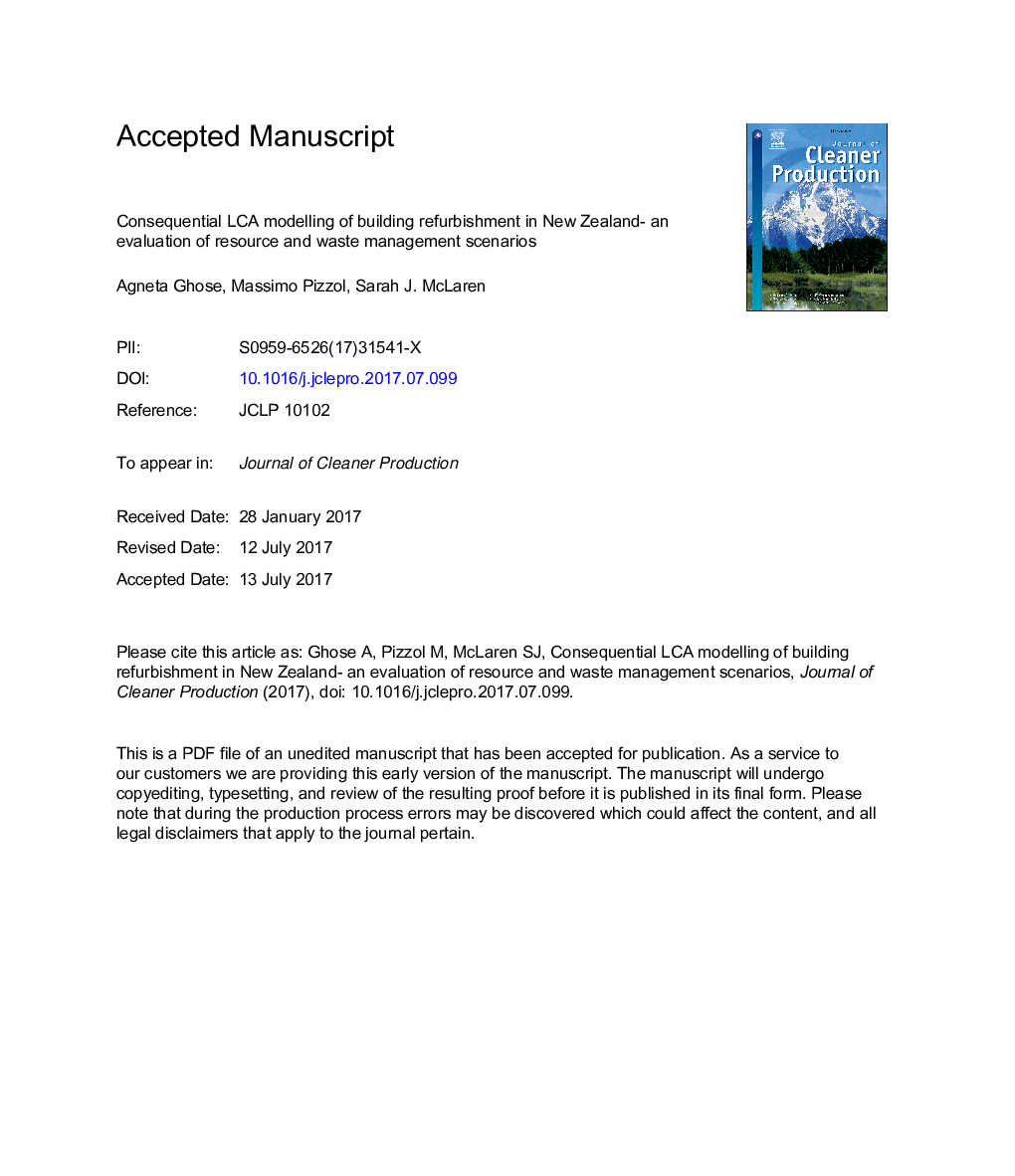| Article ID | Journal | Published Year | Pages | File Type |
|---|---|---|---|---|
| 5479988 | Journal of Cleaner Production | 2017 | 32 Pages |
Abstract
Large scale building refurbishments are likely to become more common in New Zealand's building sector, and therefore it is relevant to assess the environmental impacts associated with these activities. The aim of this study was to investigate the environmental impacts arising from the increase in demand for building refurbishments in New Zealand using consequential Life Cycle Assessment (LCA). The study focused on the identification of resource constraints and marginal suppliers of construction materials using market information specific to New Zealand. Building refurbishment strategies related to waste minimization at construction sites and use of recycled materials at production sites were compared. According to the results, increasing the rates of construction waste recovery and re-use at site can reduce the overall environmental impact of a building refurbishment by 15-25% compared to use of construction materials with recycled content which only reduces the environmental impacts by approximately 5%. The net impact results were sensitive to the quality of recyclable material, location of the marginal supplier and marginal energy source. The study recommends stakeholders involved during early building design to focus on material sourcing and quality; and practical solutions to increase material recoverability at site e.g. planning for efficient on-site management for waste disaggregation, recovery and re-use.
Related Topics
Physical Sciences and Engineering
Energy
Renewable Energy, Sustainability and the Environment
Authors
Agneta Ghose, Massimo Pizzol, Sarah J. McLaren,
